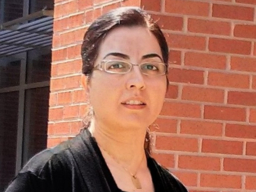Doctoral Dissertation Defense: Mina Hosseni
Advisors: Drs. Nagaraj Neerchal and Ann Griber-Baldini (UMB)
Location
Mathematics/Psychology : 401
Date & Time
December 20, 2017, 2:00 pm – 4:00 pm
Description
Title: Statistical modeling of self and proxy responses with gerontological applications
Abstract
In longitudinal studies of older adults, some participants are unable to provide responses by themselves due to advancing severity of their conditions. Therefore, a designated proxy provides responses whenever the participant is unavailable to respond. In practice, sometimes, the proxy responses are excluded from the dataset before conducting the analyses, while sometimes proxy responses are included in the analyses and treated as if they are self responses. Both approaches are problematic as they result in biased parameter estimates. In this study, we consider a framework where self and proxy responses may be both included in the analyses and postulate a model where both are treated as coming from separate sources. The framework accommodates the estimation of the parameters corresponding to the distributions of both self and proxy data separately and facilitates statistical comparison of these parameters.
Statistical testing of the equality of the self and proxy parameters and the joint distribution could be used to determine if proxy may be used in place of self responses. First, we utilize Weighted Generalized Estimating Equations (WGEE) method for the combined datasets containing both self and proxy data to obtain separate self and proxy parameter estimates where self responses follow a dropout structure. Different approaches for obtaining the weights are also explored. Then, we extend an available framework for modeling self and proxy data using the conditional distributions of the self and proxy responses given the observation pattern, and the conditional distribution of the pattern given the data to derive a joint likelihood for the complete data vector corresponding to a subject. The likelihood obtained by this approach can be maximized using numerical optimization methods. Performance of the various approaches is investigated via simulation studies.
Both approaches, the WGEE method and the Maximum Likelihood (ML) approach, are used to analyze the data from the "Baltimore Hip Study Cohort 7".
Abstract
In longitudinal studies of older adults, some participants are unable to provide responses by themselves due to advancing severity of their conditions. Therefore, a designated proxy provides responses whenever the participant is unavailable to respond. In practice, sometimes, the proxy responses are excluded from the dataset before conducting the analyses, while sometimes proxy responses are included in the analyses and treated as if they are self responses. Both approaches are problematic as they result in biased parameter estimates. In this study, we consider a framework where self and proxy responses may be both included in the analyses and postulate a model where both are treated as coming from separate sources. The framework accommodates the estimation of the parameters corresponding to the distributions of both self and proxy data separately and facilitates statistical comparison of these parameters.
Statistical testing of the equality of the self and proxy parameters and the joint distribution could be used to determine if proxy may be used in place of self responses. First, we utilize Weighted Generalized Estimating Equations (WGEE) method for the combined datasets containing both self and proxy data to obtain separate self and proxy parameter estimates where self responses follow a dropout structure. Different approaches for obtaining the weights are also explored. Then, we extend an available framework for modeling self and proxy data using the conditional distributions of the self and proxy responses given the observation pattern, and the conditional distribution of the pattern given the data to derive a joint likelihood for the complete data vector corresponding to a subject. The likelihood obtained by this approach can be maximized using numerical optimization methods. Performance of the various approaches is investigated via simulation studies.
Both approaches, the WGEE method and the Maximum Likelihood (ML) approach, are used to analyze the data from the "Baltimore Hip Study Cohort 7".
Tags:
